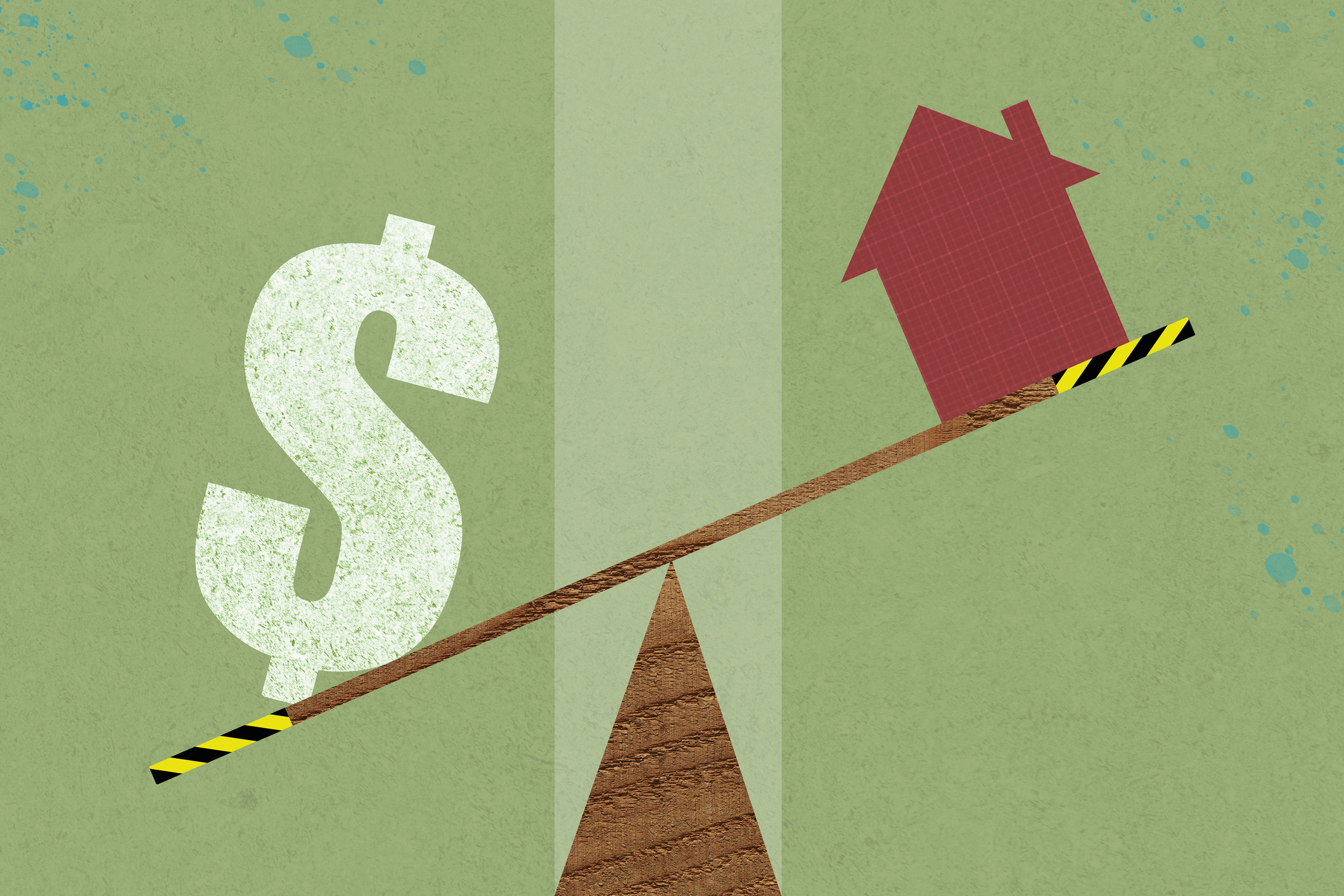Ohio Property Tax Shock: Why Your New Assessment Is So High (And What Comes Next)
Higher home valuations in Ohio have led to homeowner property tax relief. But is it enough?


A lot’s happening with Ohio property taxes, and that’s not just because property tax bills are rising.
Earlier this summer, Gov. Mike DeWine vetoed several budget-line items that would’ve provided property tax relief in the Buckeye State. DeWine reportedly vetoed the measures due to concerns about school funding, and instead formed a working group of local officials and former lawmakers to consider new proposals for relief.
However, the Ohio House overrode the veto on two of the provisions, and this month, the Ohio Senate followed. Now there’s a new property tax law for Ohio homeowners in 2026.
From just $107.88 $24.99 for Kiplinger Personal Finance
Become a smarter, better informed investor. Subscribe from just $107.88 $24.99, plus get up to 4 Special Issues

Sign up for Kiplinger’s Free Newsletters
Profit and prosper with the best of expert advice on investing, taxes, retirement, personal finance and more - straight to your e-mail.
Profit and prosper with the best of expert advice - straight to your e-mail.
But what does all that mean for your next property tax bill? Read on.
Why are Ohio property taxes so high?
Ohio’s property tax rate is 1.3%, which is higher than the national average, according to the Tax Foundation. Yet that alone doesn’t account for extraordinarily high property tax bills in the Buckeye State. Home valuations also contribute to high Ohio property taxes:
- The median price of a single-family home has increased by 70% over the last five years, according to the most recent data from Redfin.
- That means a home that used to cost a buyer $196,000 now costs $278,900.
- The increase in Ohio home values is largely due to the post-pandemic housing boom and recent high inflation.
Unlike most states that reappraise home values every one to five years, Ohio properties are typically assessed only once every six years (though an update may be conducted the third year after a full assessment). Consequently, property tax bills often surge from one evaluation to the next, especially during housing booms.
Another way Ohio property tax bills may rise is through replacement or emergency levies — although these will soon be a thing of the past. A recently enacted law has eliminated new levies of this kind.
Ohio property tax relief may come in 2026
Just four months ago, DeWine vetoed several property tax reform measures in the state budget, reportedly voicing concern that the provisions could lead to financial instability for state schools.
After all, the Buckeye State collects roughly $19 billion in property taxes annually, with significant collections going into local government coffers.
Most of the struck-down provisions died on the governor’s desk. But the Ohio General Assembly recently overrode the veto on two measures, making the following law as of January 1, 2026, and later:
- Elimination of new replacement property tax levies. Localities (like school districts) can no longer ask voters to replace an expiring levy with a new one based on the current valuation of properties. This allows existing levies to be renewed based on historical (and typically lower) property tax rates.
- Elimination of new emergency property tax levies. Local officials are no longer able to ask voters to approve a fixed-year emergency levy to raise additional property taxes for school funding, even if a school district is experiencing a financial shortfall.
While neither measure will cut current property taxes, eliminating these two levies may provide future property tax relief to Ohioans over time.
Still, localities will most likely bear the brunt of the tax cuts. Data show 29% of Ohio's state and local revenue comes from property taxes. That makes Ohio slightly more reliant on property tax revenue compared to the national average.
Plus, with the Buckeye State’s recent cut to income taxes, localities might receive less income tax revenue than in years past, further pressuring school and local jurisdiction budgets.
Ohio property tax relief proposals on the way
Rather than endorsing specific budget items for property tax relief, DeWine recently formed a working group. This group, composed of county auditors, school superintendents, and former legislators, was tasked with identifying methods to reduce property taxes for Ohio residents.
Many Ohio property tax relief proposals came out of the working group on September 30. Here are a couple that focus on Ohio homeowners:
- Expanding the homestead exemption. The proposal would raise the income threshold to allow more Ohioans 65 and older (or disabled) to qualify for property tax relief. The proposal would also increase the tax break’s valuation amount.
- Implementing a new property tax “circuit breaker” program. This would provide relief to homeowners when their property tax bill exceeded a certain percentage of their income.
But that’s not all. Just a day after the working session concluded, an Ohio House committee held a hearing on two property tax bills. One of them, House Bill 186, proposes capping property tax increases at the rate of inflation. Supporters claim that Ohio homeowners could save $1.7 billion over the next three years if the bill is passed.
HB 186 is currently under review in the House Ways and Means Committee. The working group recommendations are awaiting legislative action from the General Assembly.
Stay tuned for further updates.
Read More
Profit and prosper with the best of Kiplinger's advice on investing, taxes, retirement, personal finance and much more. Delivered daily. Enter your email in the box and click Sign Me Up.

Kate is a CPA with experience in audit and technology. As a Tax Writer at Kiplinger, Kate believes that tax and finance news should meet people where they are today, across cultural, educational, and disciplinary backgrounds.
-
 December Fed Meeting: Live Updates and Commentary
December Fed Meeting: Live Updates and CommentaryThe December Fed meeting is one of the last key economic events of 2025, with Wall Street closely watching what Chair Powell & Co. will do about interest rates.
-
 This Is Why Investors Shouldn't Romanticize Bitcoin
This Is Why Investors Shouldn't Romanticize BitcoinInvestors should treat bitcoin as the high-risk asset it is. A look at the data indicates a small portfolio allocation for most investors would be the safest.
-
 I'm a Federal Benefits Pro: I Answer These 2 Questions a Lot
I'm a Federal Benefits Pro: I Answer These 2 Questions a LotMany federal employees ask about rolling a TSP into an IRA and parsing options for survivor benefits, both especially critical topics.
-
 Is a New $25,000 Health Care Tax Deduction Coming in 2026?
Is a New $25,000 Health Care Tax Deduction Coming in 2026?Tax Policy A proposal from GOP Sen. Josh Hawley is adding to the chatter about health care affordability.
-
 Are You Middle-Class? Here's the Most Tax-Friendly State for Your Family
Are You Middle-Class? Here's the Most Tax-Friendly State for Your FamilyTax Tips We found the state with no income tax, low property tax bills, and exemptions on groceries and medicine.
-
 Costco Sues Over Trump Tariffs: What Could That Mean for Prices in 2026?
Costco Sues Over Trump Tariffs: What Could That Mean for Prices in 2026?Tariffs The retailer is making headlines not just for its famous hot dog and gold bars but for suing the Trump administration over tariffs.
-
 Social Security Benefits Quiz : Do You Know the IRS Tax Rules?
Social Security Benefits Quiz : Do You Know the IRS Tax Rules?Quiz Social Security benefits often come with confusing IRS tax rules that can trip up financially savvy retirees and near-retirees.
-
 New 2026 Tax Change Could Mean More for Your IRA and 401(k) Savings
New 2026 Tax Change Could Mean More for Your IRA and 401(k) SavingsRetirement Savings Here's how the new IRS inflation adjustments will increase the contribution limits for your 401(k) and IRA in the new year.
-
 Capital Gains Tax Quiz: How Well Do You Really Know IRS Investment Tax Rules?
Capital Gains Tax Quiz: How Well Do You Really Know IRS Investment Tax Rules?Quiz Take our capital gains tax quiz to test your investment taxes knowledge. Learn about loss rules, holding periods, and tax incentives that could impact your savings.
-
 6 Tax Reasons to Convert Your IRA to a Roth (and When You Shouldn't)
6 Tax Reasons to Convert Your IRA to a Roth (and When You Shouldn't)Retirement Taxes Here’s how converting your traditional retirement account to a Roth IRA can boost your nest egg — but avoid these costly scenarios.
-
 Could Tax Savings Make a 50-Year Mortgage Worth It?
Could Tax Savings Make a 50-Year Mortgage Worth It?Buying a Home The 50-year mortgage proposal by Trump aims to address the housing affordability crisis with lower monthly mortgage payments. But what does that mean for your taxes?